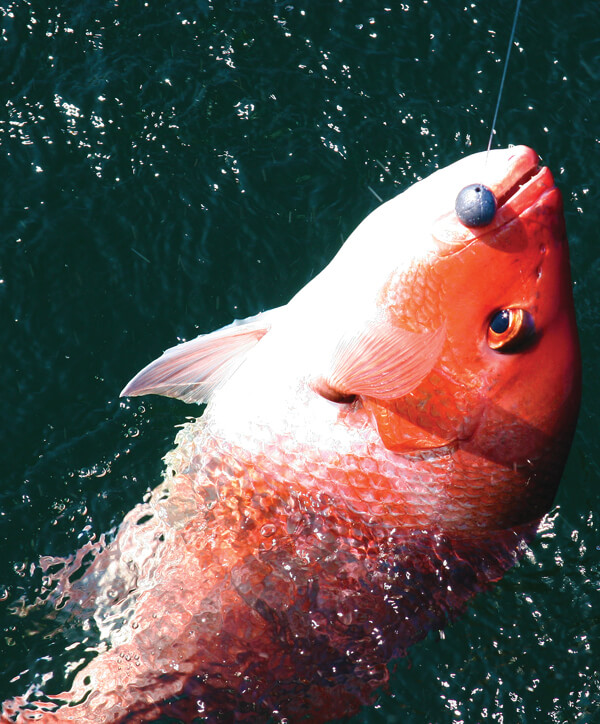 By David Rainer, ADCNR:
By David Rainer, ADCNR:
Chris Blankenship, director of the Alabama Marine Resources Division, was recently in Silver Spring, Maryland, and Washington, D.C., to continue spreading Alabama’s common-sense approach to the management of the fisheries in the Gulf of Mexico.
Blankenship and the directors of the marine resources divisions of the other four Gulf states visited with members of Congress on a variety of issues, especially the red snapper fishery, which has been the center of controversy for the last decade. The federal snapper season for 2017 has not been set, but it is not expected to be much different than the ridiculously restrictive 2016 dates.
“Rep. Bradley Byrne has reintroduced legislation that would take away some of the strict quotas. That would give us some flexibility, which is what we need to get away from these short seasons and find some other management strategies,” Blankenship said.
One of the goals in Washington is to get Alabama’s state waters border set permanently to 9 miles. Sen. Richard Shelby added a provision in last year’s budget resolution that extended that border to 9 miles, but it expires with the budget. Blankenship hopes Alabama’s Congressional delegation can find a way to make it permanent.
“That would allow us more state management of the reef fish fisheries,” Blankenship said. “And we’re hoping Congress will make changes in the Magnuson-Stevens Act that will give NOAA (National Oceanic and Atmospheric Administration) more flexibility in the way it manages the fisheries. We want NOAA to move away from hard quotas and move to other management strategies that would change overfishing limits and still build healthy fisheries while allowing more access.”
Blankenship also went to Silver Spring, Maryland to meet with NOAA Fisheries. The trip was to promote Alabama’s method of counting red snapper. Alabama is known for unparalleled red snapper fishing, but Marine Resources contends that NOAA has been drastically overestimating the amount of snapper landed in Alabama each year, which leads to extremely restrictive seasons. Alabama’s mandatory Red Snapper Reporting Program, otherwise known as Snapper Check, has been in effect for three years.
The Alabama Snapper Check estimated a little more than 1.5 million pounds of snapper were landed in 2016 by the recreational sector during federal and state seasons. NOAA Fisheries’ survey program estimated that more than 2.7 million pounds were landed in Alabama. The overestimated catch has been consistent for the three years Snapper Check has been in existence. Blankenship said when the statistics are examined, Alabama is much more confident in the Snapper Check estimate than the fed’s.
Blankenship has petitioned NOAA Fisheries to certify Snapper Check and use its data to determine the 2016 Alabama landings as well as use the Snapper Check numbers to set the season dates for 2017.
“They have been very receptive to our program,” he said. “We’ve been responsive to their input, and we feel like it’s more of a formal process to get it certified. We have no reason to think it wouldn’t be certified since we have worked with them and their consultants all through the process.”
 By David Rainer, ADCNR:
By David Rainer, ADCNR: